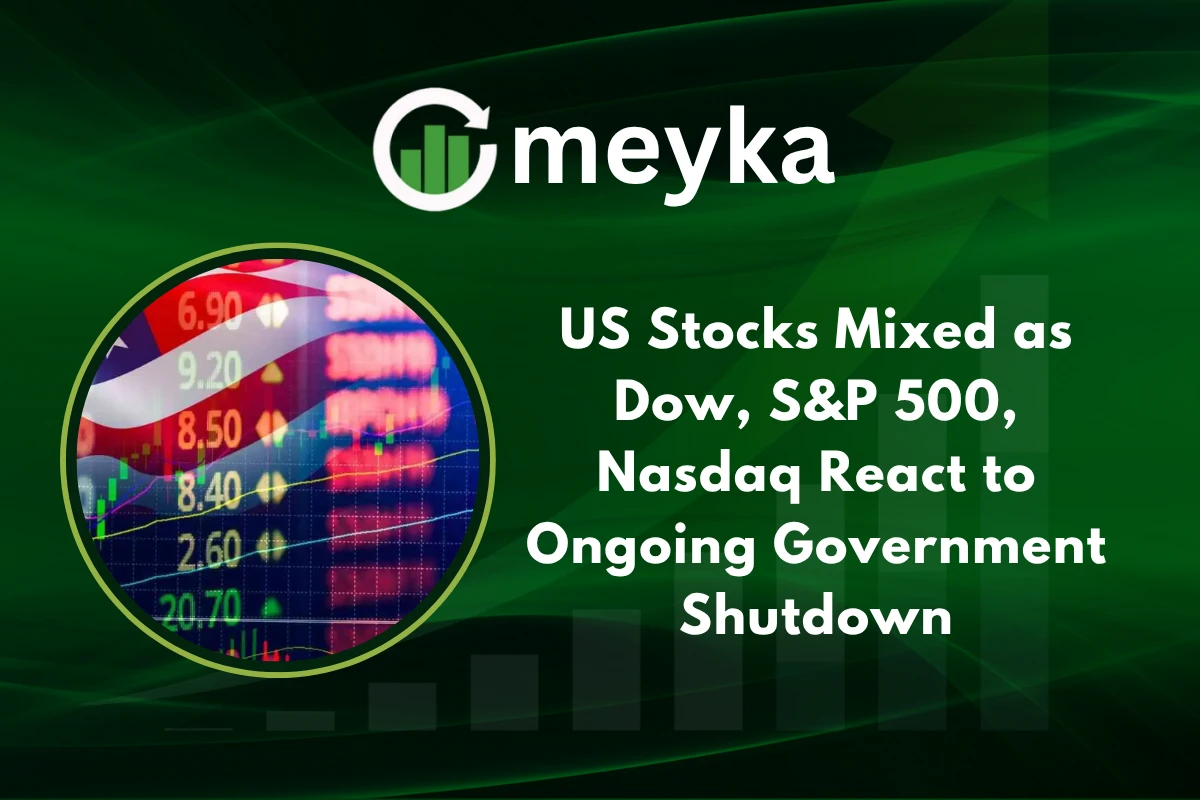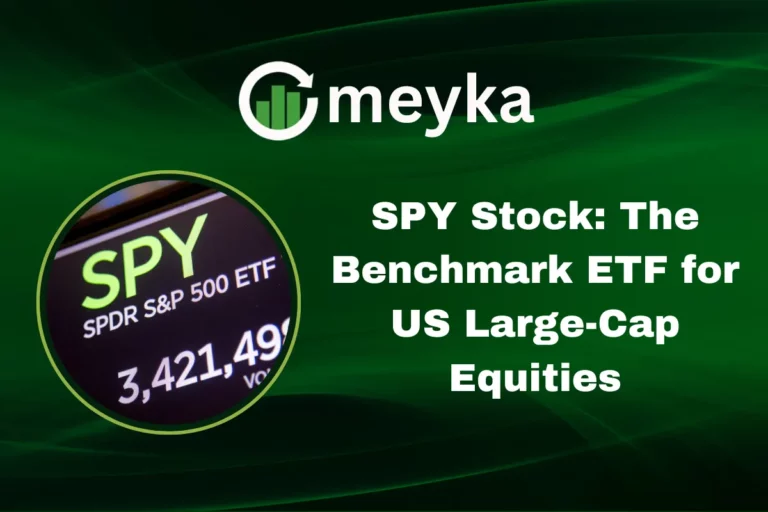US Stocks Mixed as Dow, S&P 500, Nasdaq React to Ongoing Government Shutdown
US stocks showed a mixed session as the U.S. government shutdown continued. Traders in New York and on Wall Street balanced risk appetite with caution. The lack of fresh government data muddied the Fed outlook, while sector rotation and earnings headlines set intraday tone.
Investors looked to yields, corporate updates, and money flows for clues on how to position ahead of next week.
US stocks: Market snapshot and index moves
What the major indexes did today
The Dow Jones held modest gains, the S&P 500 was flat to slightly higher, and the Nasdaq Composite lagged as tech names paused after recent strength. Volume ticked up on select names, and the market showed a narrow leadership set rather than broad participation.
These moves mirror recent patterns where pockets of strength offset headline risk.
Why are US stocks mixed right now? The shutdown delays economic data, creating uncertainty for the Fed and investors, while sector-specific news drives individual stock moves.
Key short-term drivers
Traders said three themes dominated: the government shutdown and delayed data, sector rotation favoring cyclical names, and bond yield moves that affect valuation. The resulting mix left indices without a clear direction as investors digested risk and reward.
US stocks: Investor sentiment and Wall Street reactions
How investors are positioning
Institutional desks trimmed speculative exposure, while many funds increased hedges ahead of the next economic prints. Retail flows remained active in certain tech and meme names, but professional money favored cash management and selective buys. Social feeds showed active debate, with some traders posting real time reads on sentiment:
Wall Street commentary and market tone
Analysts emphasized that the lack of official jobs and inflation prints makes Fed policy calls harder. That uncertainty has traders waiting for clearer data before committing large directional bets.
Investopedia noted that markets largely shrugged off the early days of the shutdown but warned that prolonged deadlock would complicate policy decisions.
Will sentiment shift quickly? Yes, big headlines on the shutdown, a surprise economic print, or Fed comments could flip sentiment fast.
US stocks: Economic impact of the shutdown
What the data blackout means for markets
The shutdown delays key releases that help the market gauge growth and inflation. Without these signals, policy makers and traders must rely on private surveys and alternate datasets. That creates a fog that can widen intraday swings and increase reliance on headline-driven trades.
Fed decisions and Treasury yield context
With official data delayed, pricing for Fed policy becomes more speculative. Treasury yields reacted to the uncertainty, nudging equities higher or lower based on shifting risk premia. Traders watch the 10-year yield as a key input to equity valuation and as a gauge of real rate trends.
Could the shutdown force the Fed to change plans? The Fed uses many inputs, but a prolonged lack of official data complicates the process and could affect decision timing.
US stocks: Sector performance and winners
Tech, banking, and energy in focus
Tech names softened after recent gains, weighing on the Nasdaq. Banks moved on yield dynamics and loan growth expectations, while energy stocks tracked oil price swings and supply news. This mix created the “indices mixed” backdrop where leadership rotated between sectors rather than coming from one direction.
Earnings and corporate drivers
Earnings whispers and specific company updates still moved stocks, sometimes overpowering macro headlines. Traders highlighted that stock-specific news can create intraday divergences, and that’s exactly what kept US stocks mixed on the day.
Which sector is the key to the next leg upward? It depends on whether yields rise or fall; rising yields favor financials and cyclicals, falling yields favor growth and tech.
US stocks: What analysts are predicting for next week
Near-term forecasts and risk scenarios
Analysts outlined two main scenarios: a quick political fix that reduces uncertainty and lifts risk appetite, or a protracted shutdown that increases volatility and pushes investors into safe havens. Trading desks used varied models, with some leveraging AI Stock research to spot flow and sentiment shifts across venues.
Strategy notes from market pros
Most recommended caution and smaller position sizes, waiting for either concrete policy moves or fresh data. Some funds used equity hedges while opportunistic buyers hunted value in beaten down segments.
What should traders watch next week? Funding headlines, corporate earnings, and any substitute data that fills the gap left by the shutdown.
US stocks: Market mechanics and wider macro picture
Money flows, futures, and liquidity patterns
Futures markets showed mixed signals, with overnight flows indicating risk appetite in certain regions while retail order books reflected selective buying. Hedge funds adjusted leverage as liquidity windows tightened around key macro events.
A noted analyst tweeted a live read on position shifts:
Cross market links and global context
Global markets looked to New York cues, while Washington DC developments drove headlines. Reuters and global desks emphasized that the shutdown’s ripple effects extend to currency and commodity markets, which in turn feed back into equity valuations.
Many quant teams also added AI Stock Analysis to their toolkits to simulate outcomes under different shutdown durations.
US stocks: Practical advice for investors
Risk management and watchlist items
Investors should set clear stop levels and use diversified exposure. Watch treasury yields, Fed commentary, and any interim economic releases. For stock pickers, focus on fundamentals and liquidity, and avoid overleveraging in headline-driven rallies.
Social signals and market chatter
Traders also shared short takes and portfolio moves publicly, offering near real time color:
These feeds can help but must be weighed against verified data and professional research.
How do I navigate this uncertainty? Prioritize cash management, diversify, and follow confirmed data rather than rumors.
Conclusion
US stocks are trading in a mixed pattern because political uncertainty from the government shutdown is colliding with sector rotation and company level news. Wall Street is in wait mode, parsing limited data and positioning cautiously. If the shutdown lingers, volatility is likely to rise and investor focus will shift to alternative data and Fed commentary.
For now, traders should watch yields, earnings, and any Washington updates, and keep position sizes manageable while sentiment remains fragile. AI Stock tools may add signal speed, but they do not replace disciplined risk control.
FAQ’S
US stocks are mixed because the shutdown delays key economic data, creating uncertainty for the Fed while sector-specific earnings drive daily moves.
A shutdown stalls government spending and delays official reports, making it harder for investors to gauge growth and inflation, which can cause volatility.
Tech and growth stocks usually face pressure from higher yields, while banks and energy stocks can benefit from cyclical rotation during shutdown periods.
Most analysts expect sideways trading with elevated volatility, depending on funding negotiations, earnings releases, and shifts in Treasury yields.
Investors should prepare for more volatility, but markets often recover after shutdowns end, with fundamentals and Fed policy driving long-term direction.
Disclaimer
The above information is based on current market data, which is subject to change, and does not constitute financial advice. Always do your research.






